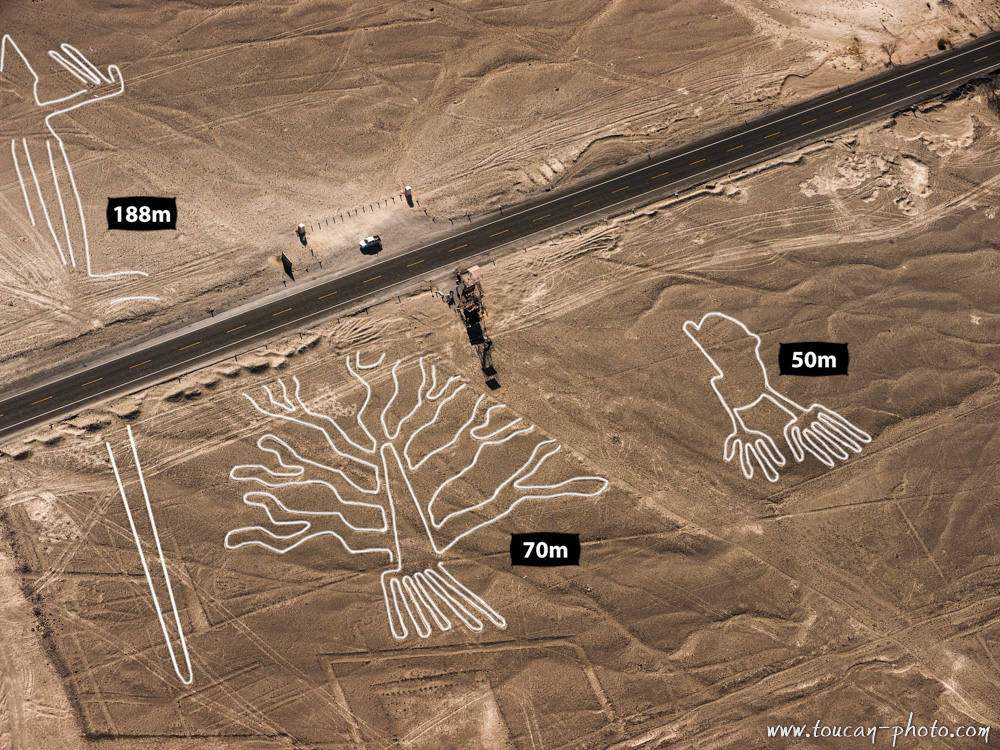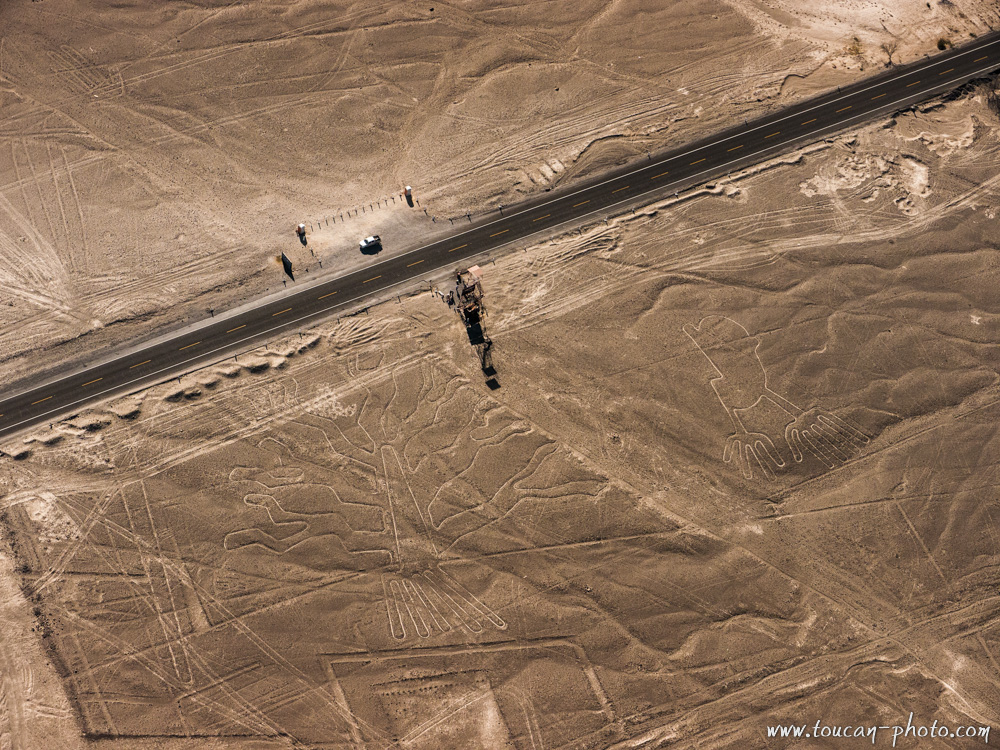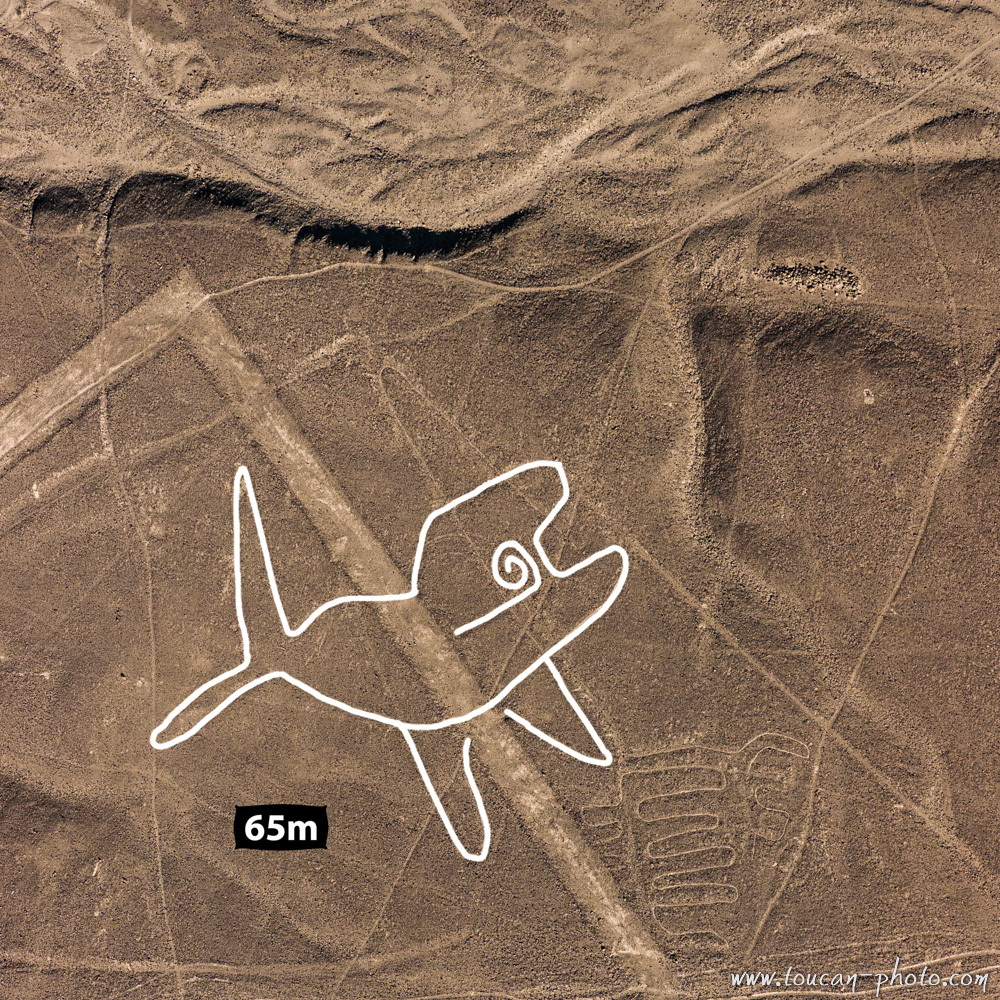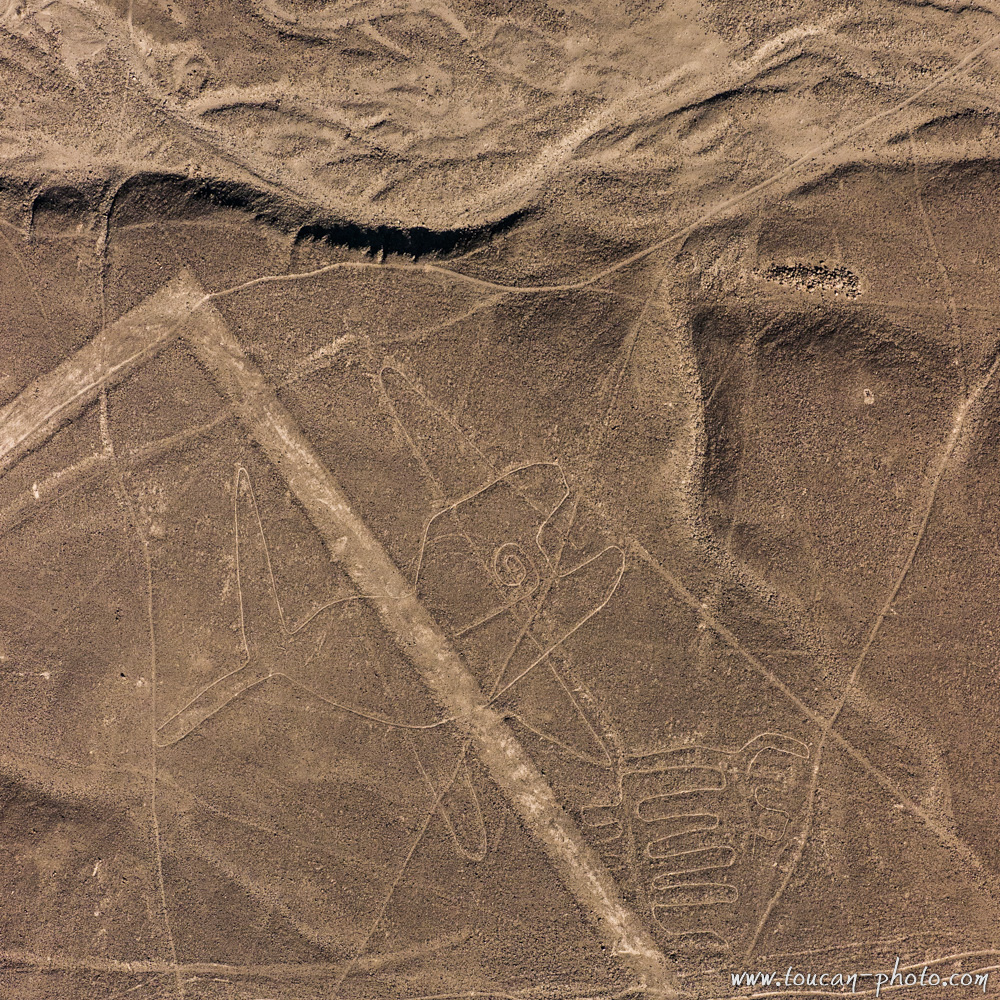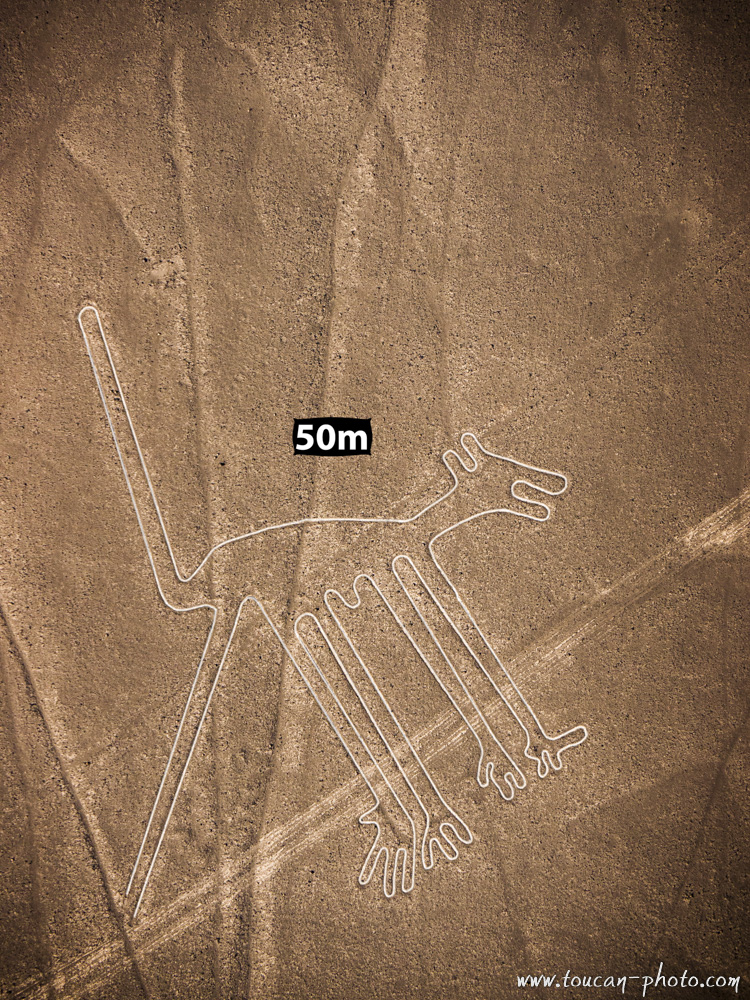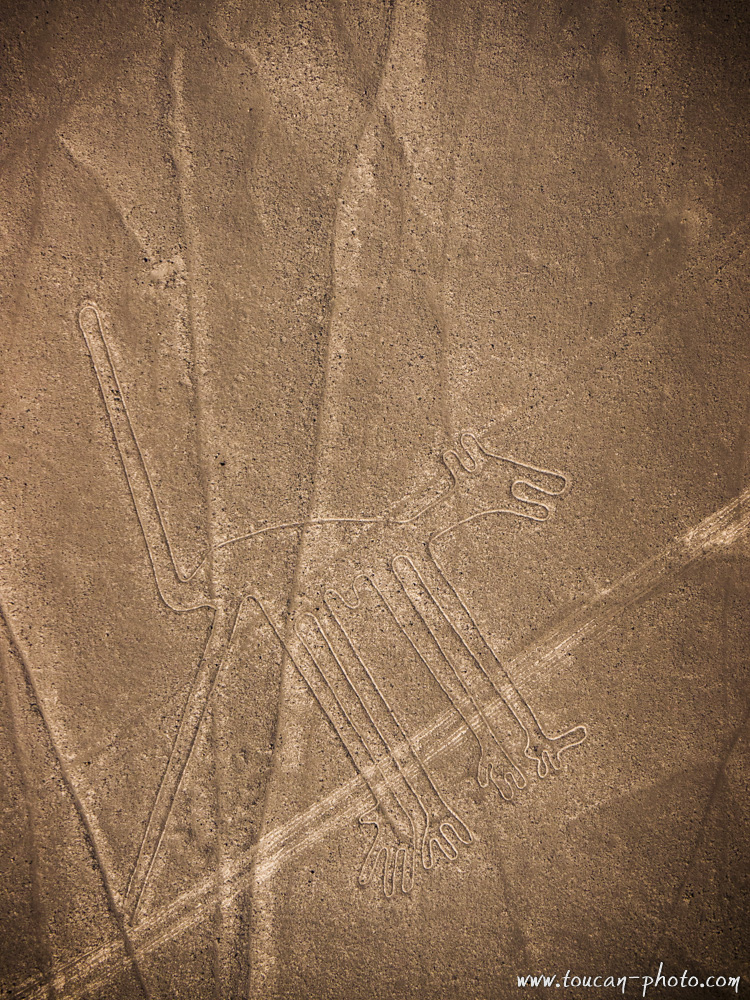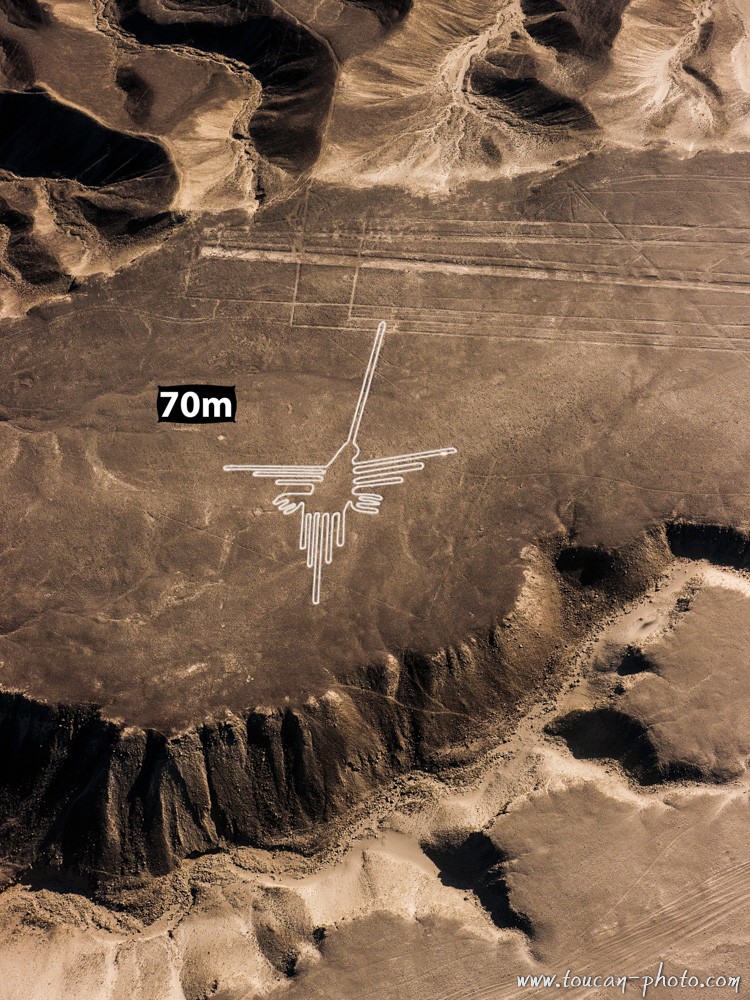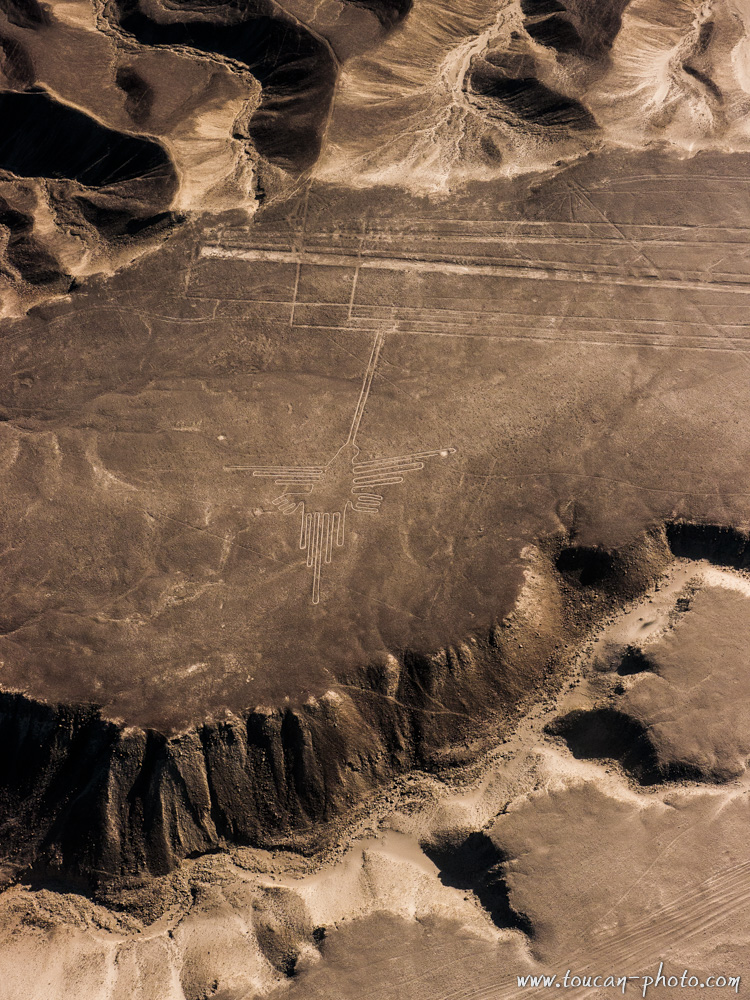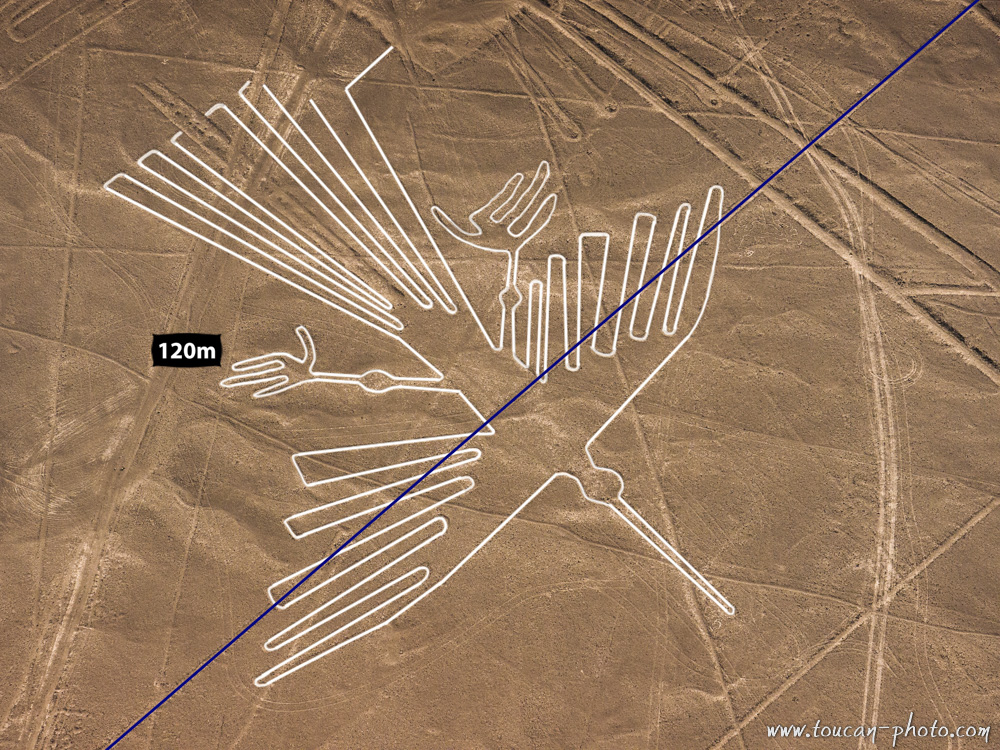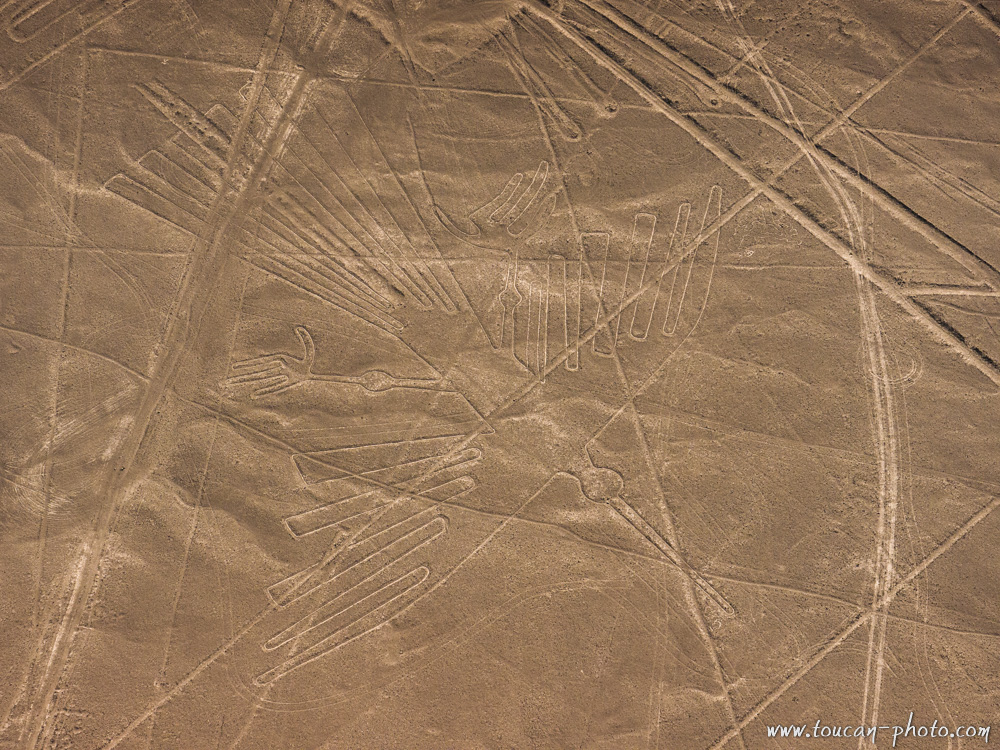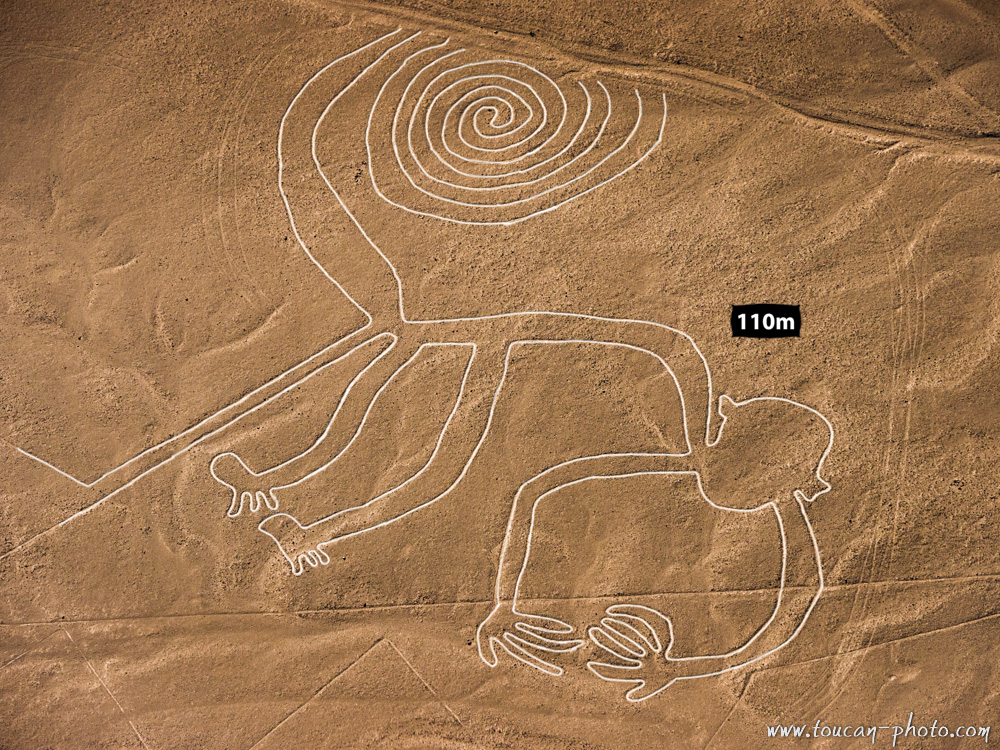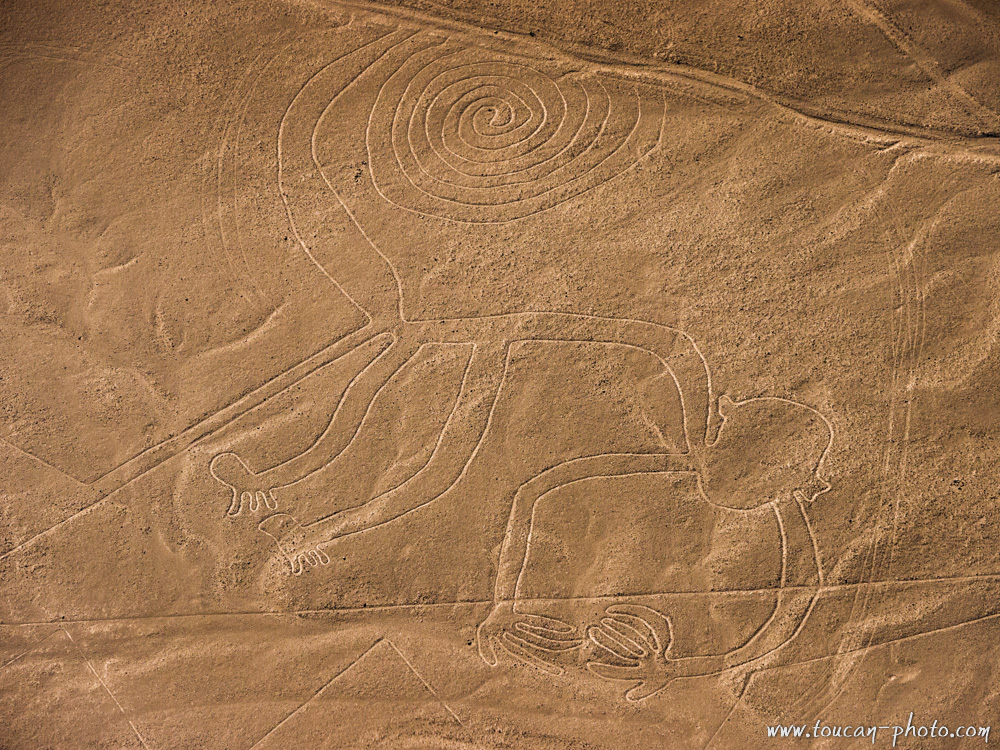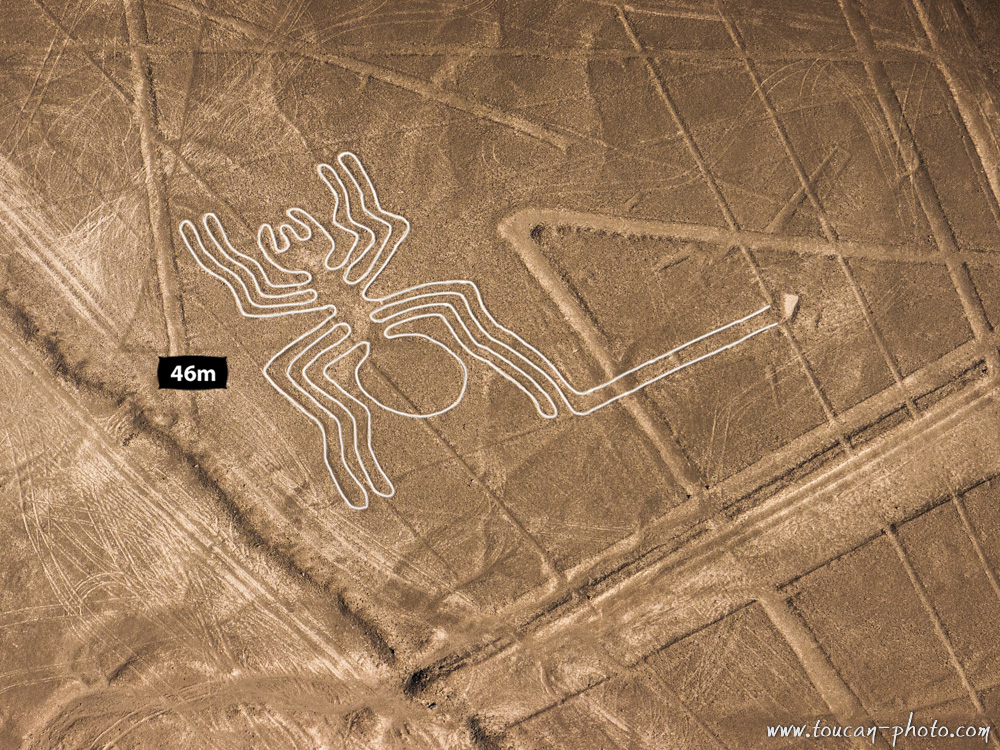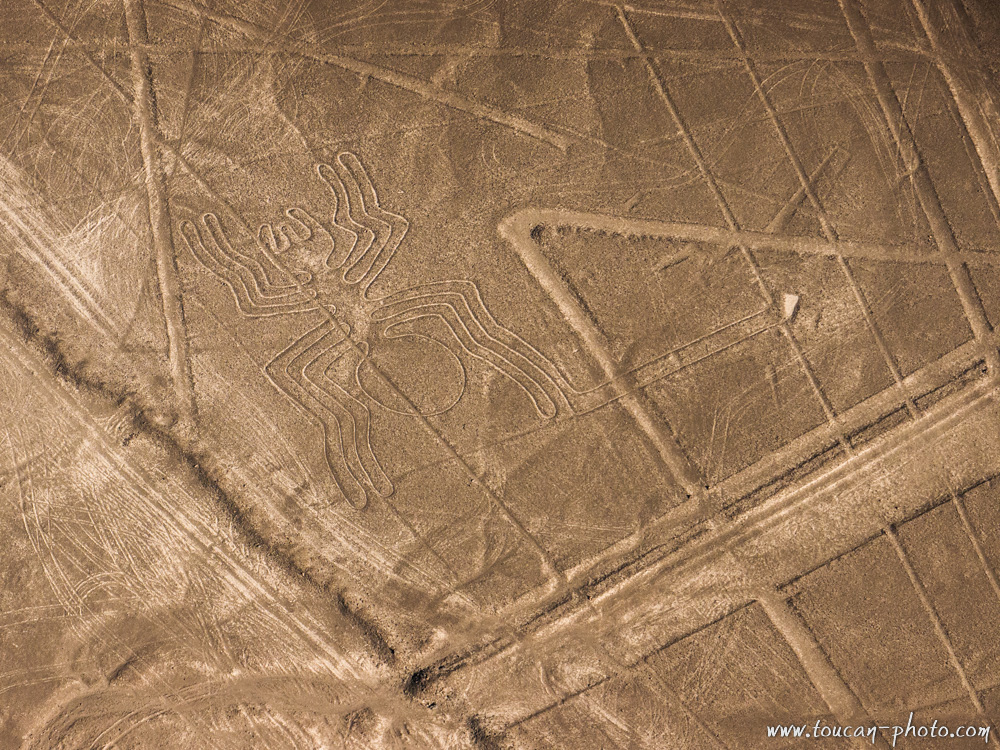Today it is particularly hot, the air is dry, it has not rained for few months, this is why you are going through the desert. The goal to reach is the mountain located on the other side. There lives Kon, the God servant who transmits the messages coming from the Earth until Heaven. In exchange of the offering you give him, he might transmit your message. This message will supplicate the Gods of Heaven to rain once more on the villages’ farming.
In order to find your way until the mountain, you follow weird paths on the ground. Those paths have not been observed in their whole by Humans.
For this, the best way would be to fly like a condor, but this gift, like the drawings, is reserved for the celestial birds and the Gods.
The geoplyphs:
The Nazca civilization (200 to 600 after JC) has left a unique archeologic footprint to the world: the Nazca geoglyphs.
The geoglyphs have been traced more than 1500 years ago on an arid plateau on the East coast of Peru.
Since 1994 they are part of the UNESCO world heritage list.
Those drawings are impressive by their size: the biggest line measures 11km long while figures of animals measure sometimes several hundreds of meters.
More than 350 figures have been counted spread over an area of 500 square kilometers.
The Nazcas, who honored the Gods coming from mineral and animal universe, have represented with those geoglyphs a part of their sacred bestiary.
Over time, the Nazcas have erased some figures in order to draw other ones instead. Some of the patterns have been destroyed by following civilizations, such as the lizard, unknown at that time, that has been cut in two, during the construction of the Pan-American. However, the Nazca plateau is protected from the wind and the rain (it rains only 30mm per year on the plateau). The geoglyphs were able to resist the ages and today we show an interest in the artistic talent of the Nazcas.
Location of the Nazca geoglyphs
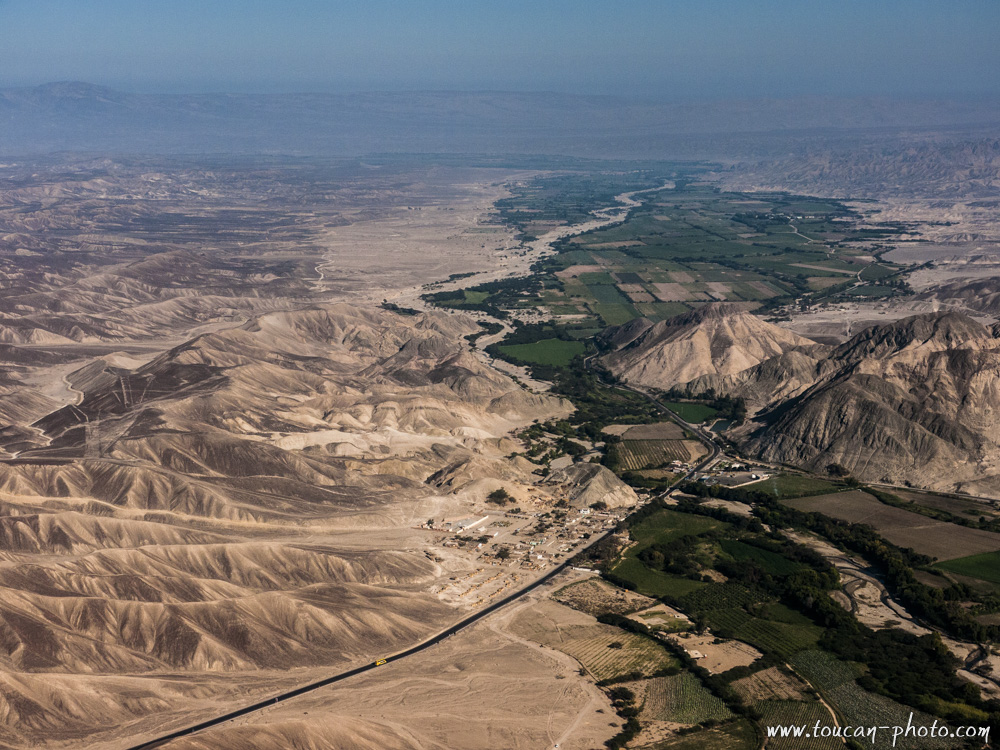 A farming strip surrounded by the Nazca desert
A farming strip surrounded by the Nazca desert
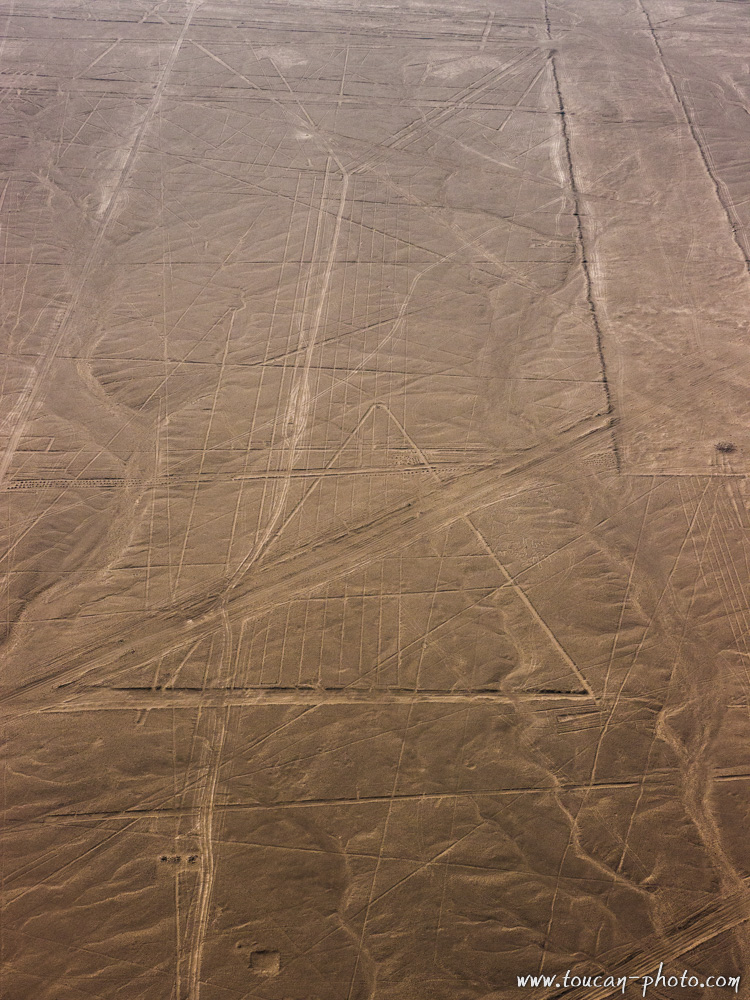 Geometric forms: triangle, lines and stripes
Geometric forms: triangle, lines and stripes
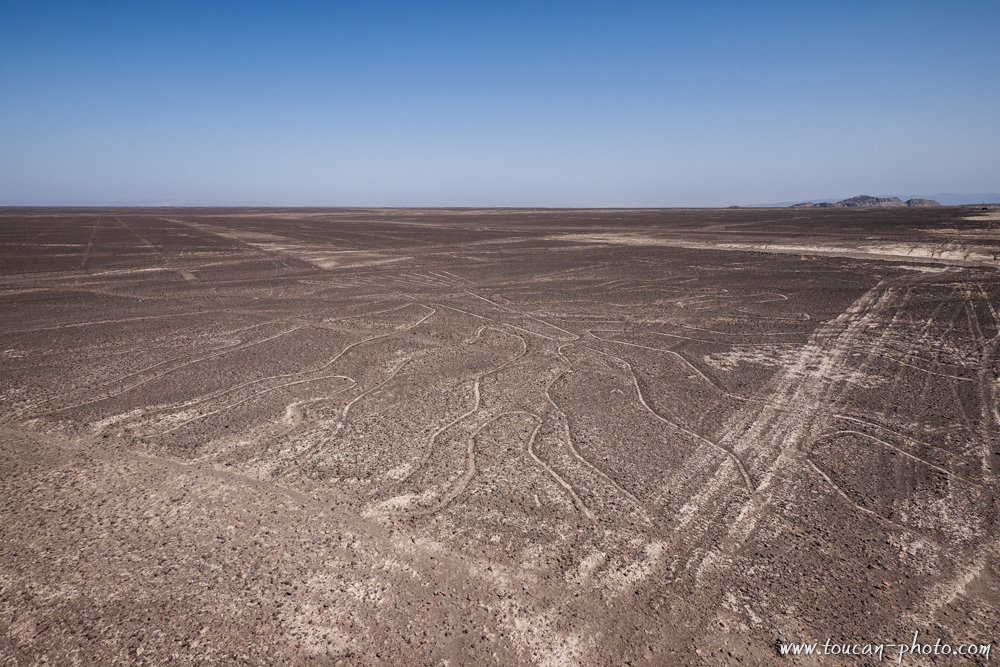 A 13 meters high watchtower has been built on the edge of the Pan-American.
A 13 meters high watchtower has been built on the edge of the Pan-American.
Observed from this high, the figure of « The tree » does not take on its full meaning yet
You have to fly over the Nazca plateau to realize the richness of the figures. « The tree » is now recognizable.
We observe also « The frog » (which has a different number of fingers on each hand) and « The lizard », cut by the path
The production:
The ground of the Nazca desert is constituted of a thin layer of ferrous and dark stones under which is a floor composed of lighter gypsum. To « draw », the Nazcas were removing dark stones in order to bring a light ground out. The removed stones were either placed on the contour of the pattern to increase the contrast, or evacuated from the site.
The complexity of the patterns in the Geoglyphs is the blank example of the level of knowledge that Nazcas people had in arithmetic and design. They were not able to fly over the plateau to control their work. However, the Nazcas knew how to draw perfect geometric figures and lines that can remain straight for several kilometers.
For the easiest patterns, the Nazcas delimited the contours of the form by stretching ropes between wooden stakes. For the most complicated patterns, they were drawing a reduced model of the desired shape on a squared support. They were able to measure different segment of this model in order to reproduce it on a larger scale.
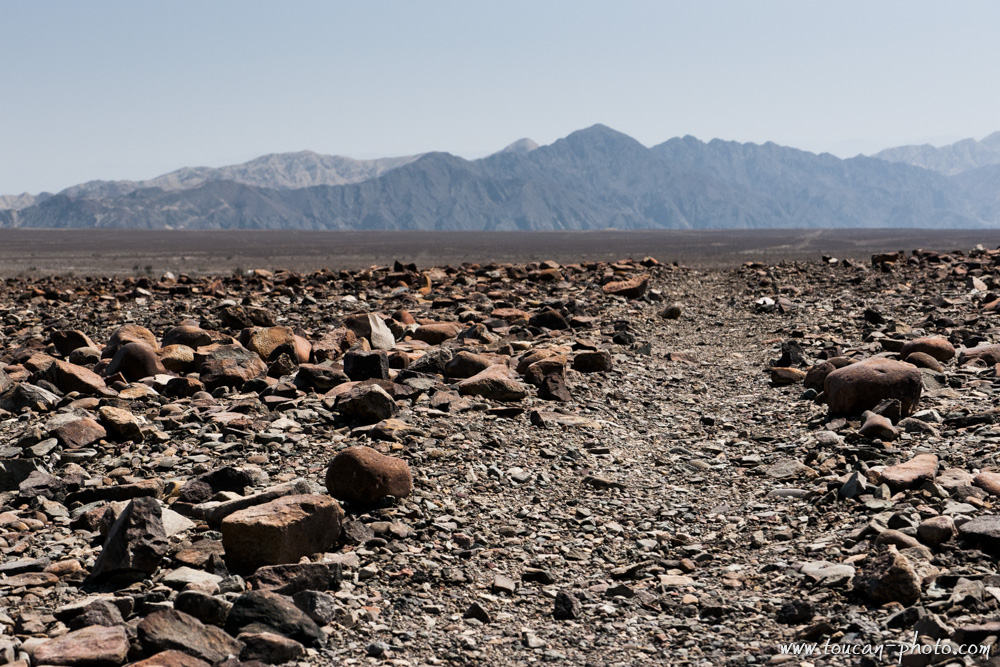 The oxidized stones have been placed on the side in order to leave space for a clearer strip
The oxidized stones have been placed on the side in order to leave space for a clearer strip
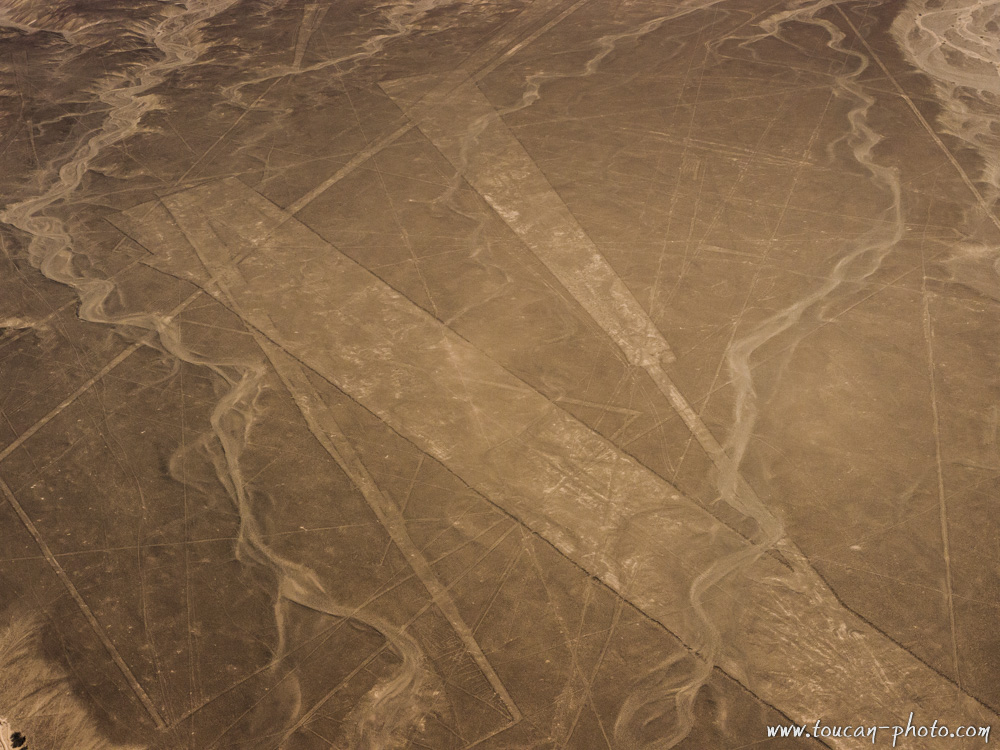 Geometrics forms
Geometrics forms
« The wale ». The Nazcas’ life was linked to the sea. Several sea animals are represented in the desert
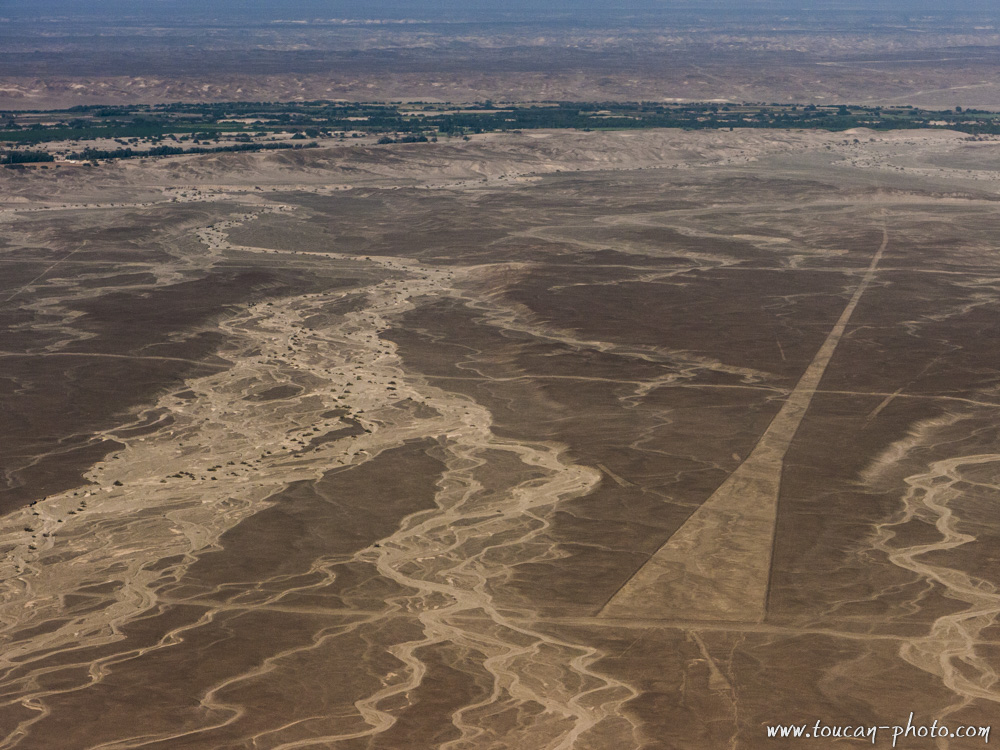 This strip of several kilometers long, requested the displacement of a large quantity of stones
This strip of several kilometers long, requested the displacement of a large quantity of stones
Some theoretical things:
For more than 70 years, archeologists from all over the world try to find an explanation to the mystery that surrounds the lines of Nazca.
Paul Kosok, American teacher, rediscovered the lines by flying over the Nazca region. He made this fly on the day of the summer solstice in 1939 and found out that one of the birds figures pointed towards the sunset. Paul Kosok christened the plateau as « the world’s largest astronomy book ». He was persuaded that all the geoglyphs had an astronomic meaning.
Paul Kosok entrusted his friend Maria Reich, German teacher, to make the study. Maria Reich gave all her life to the study of the Nazca geoglyphs. She succeeded to prove the existence of the « Nazca meter », the unit of measurement used by the Nazcas. These works showed that several links exist between the location or the orientation of the geoglyphs and the position of the stars. For Maria Reich, the Nazcas have observed the lines on the ground that were flying by the horizon. According to the position of the stars in relation to the lines, they established an agricultural calendar.
Another theory came up a little time later. Based on the fact that the geoglyphs make sense when they can be seen from the sky, some assumed that the patterns were intended to extraterrestrials and may have served as runways for space shuttles.
The last studies, conducted by researchers from the University of Massachusetts, showed that several lines have been drawn following underground rivers. As a consequence, along one of the lines, they have discovered the existence of 12 wells from the Nazca age. The hummingbird beak would point towards an important water reserve. Indeed, the Nazcas are the builders of an important underground aqueduct reserve. It would enable them to ensure the irrigation of their farmings despite the arid climate of the region.
Some of these aqueducts, more than 1000 years old, are nowadays still used by Peruvian farmers.
Those theories agree on one point: once traced, the Nazca geoglyphs became the place of ritualistic processions during which the Priests realized the necessary offerings in order to obtain the Gods favor.
« The dog ». This figure is linked to the fertility
« The hummingbird ». One of the lines located at the front of the beak points towards the sun when it rises on December, 21st, day of the winter solstice
« The condor ». Given the shape of the beak, this figure represents certainly a heron.
The parallel line, going through the bird, points towards the sun, day of the summer solstice
« The monkey », discovered in 1954 by Maria Reich.
Like « The dog » and « The frog », « The monkey » does not have the same number of fingers on each hand
« The spider ». This figure would have a lunar orientation. For the Nazcas, the spider represents the symbol of fertility and wealth, the apparition of arachnids in houses occurring at the time of sowing
And now?
Follow the link to see more pictures from Peru
or
See the galery about the Peruvian hats
